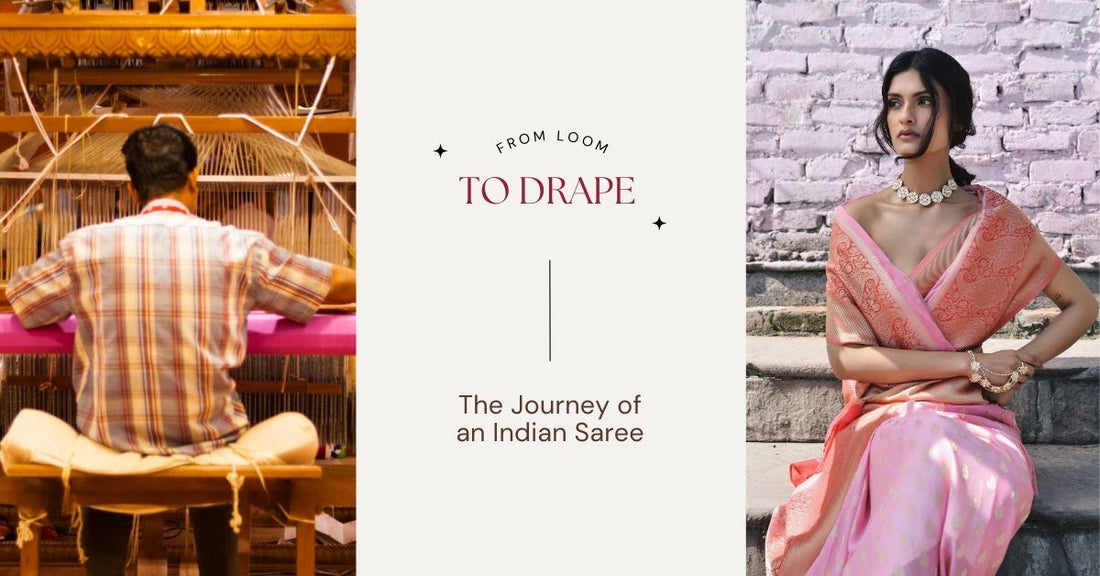
From Loom to Drape: The Journey of an Indian Sar
Saree, a six-yard wonder has graced Indian culture for centuries, carrying with it tales of craftsmanship, regional diversity, and deep cultural significance. Here’s a glimpse into the journey of an Indian saree—from its origins on the loom to its final drape.
A Rich History

![]()
![]()
The saree’s history dates back over 5,000 years, with its roots in the Indus Valley Civilization. Early depictions of draped garments on terracotta figurines and sculptures suggest that the concept of the saree has been integral to Indian attire for millennia. The word “saree” originates from the Sanskrit word śāṭī, meaning a strip of cloth.
During the Vedic period, unstitched garments symbolized purity and simplicity. Over time, the saree evolved, influenced by regional customs, climate, and local aesthetics. Ancient literature and paintings highlight how sarees were intricately tied to social and cultural identity. Each region contributed its unique weaves, patterns, and draping styles, creating an extraordinary tapestry of diversity.
The Loom: Birthplace of a Saree

The journey of a saree begins on the loom, where weavers meticulously craft every thread. Handloom weaving, a centuries-old tradition in India, forms the backbone of saree production. Here’s a step-by-step look at the creation process:
Yarn Selection:

The journey begins with choosing the perfect yarn. Materials like cotton, silk, or blended fibers are selected based on the saree's intended design and use. Each material offers a distinct texture and appeal, from the luxurious sheen of silk to the earthy comfort of cotton.
Dyeing:

The chosen yarn undergoes dyeing, where artisans carefully prepare vibrant hues using natural or chemical dyes. Traditional techniques like tie-dye (used in Bandhani sarees) or resist dyeing (used in Ikat) add unique patterns and depth to the saree.
Warping and Wefting:

The warp threads (longitudinal threads) are stretched on the loom, while the weft threads (horizontal threads) are interlaced to create the fabric. Skilled artisans use their expertise to ensure precision, as even a slight error can disrupt the entire design.
Weaving:

The saree comes to life on the loom. Techniques vary across regions—Banarasi sarees involve intricate brocade work, while Kanjeevaram sarees feature contrasting borders and motifs. Weavers often incorporate metallic threads, known as zari, for added opulence.
Embroidery and Finishing Touches:

After weaving, sarees are sometimes adorned with embroidery, beadwork, or hand-painted designs. These embellishments add character and elevate the saree into a masterpiece.
End Note

India’s saree heritage is a testament to the country’s rich traditions and unparalleled craftsmanship. Whether you inherit one or purchase a new creation, wearing a saree means carrying forward a piece of history. Celebrate this extraordinary journey and make it your own.

